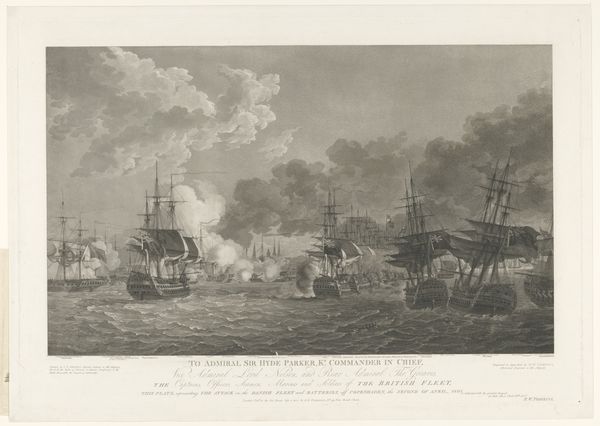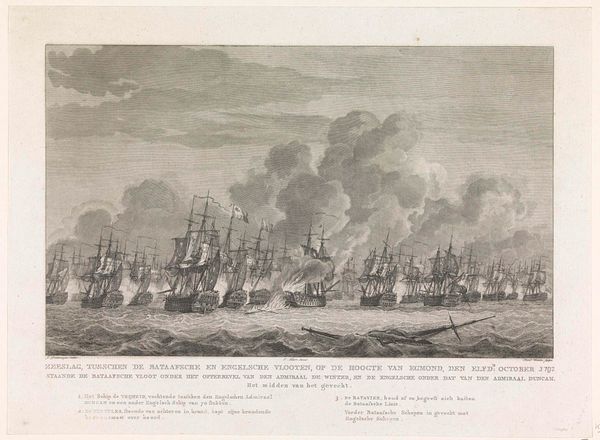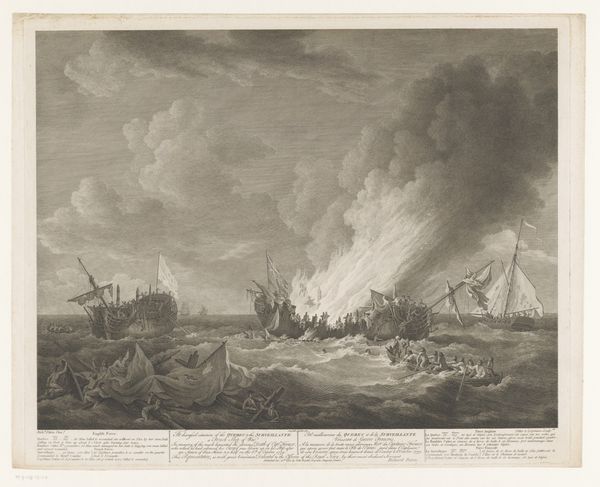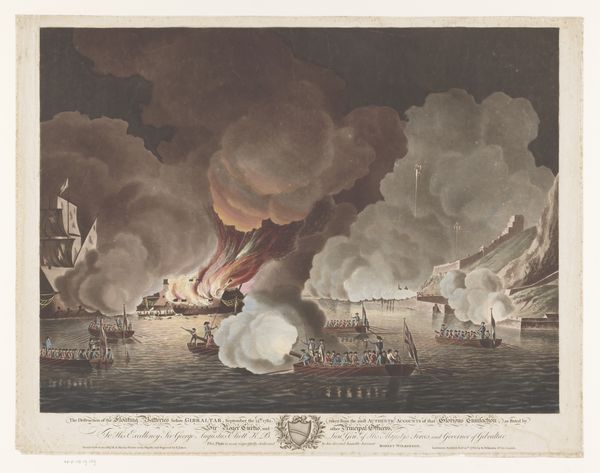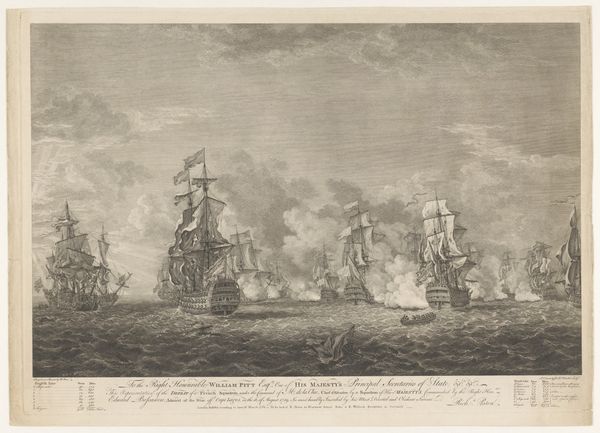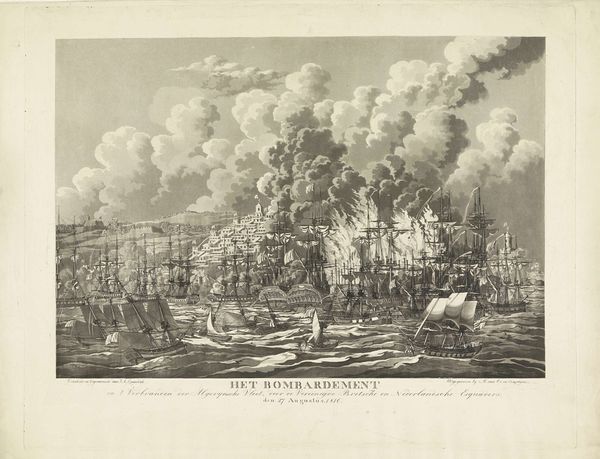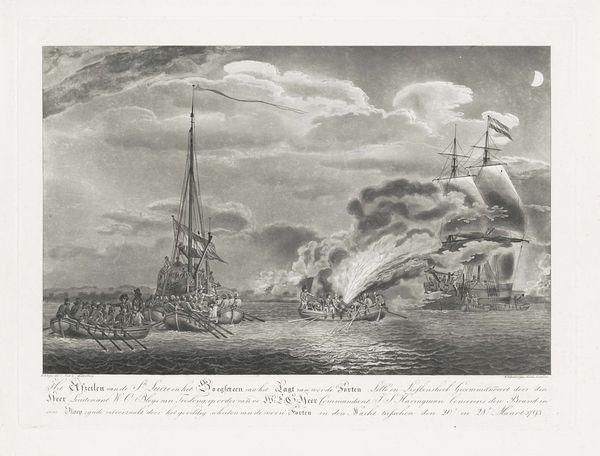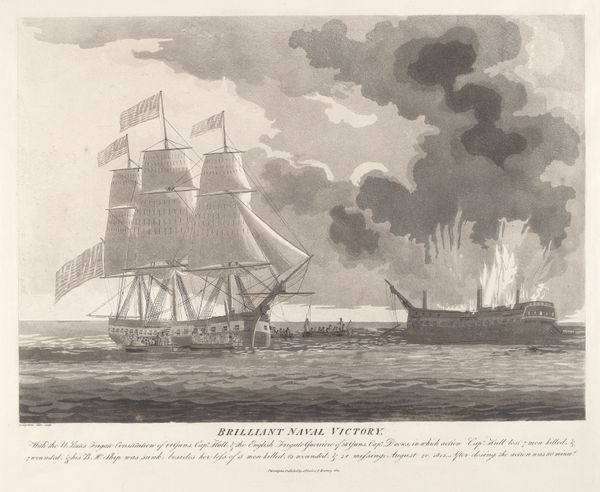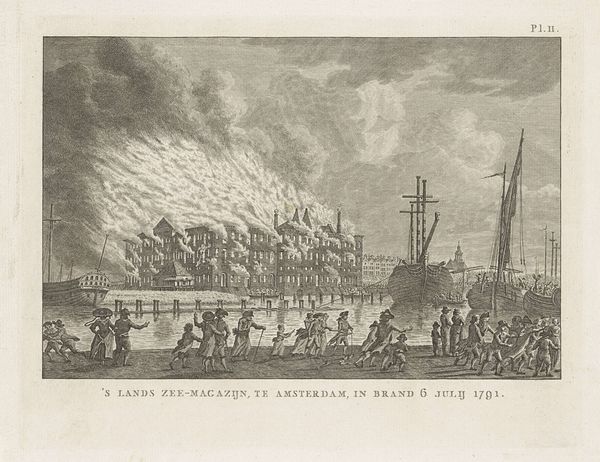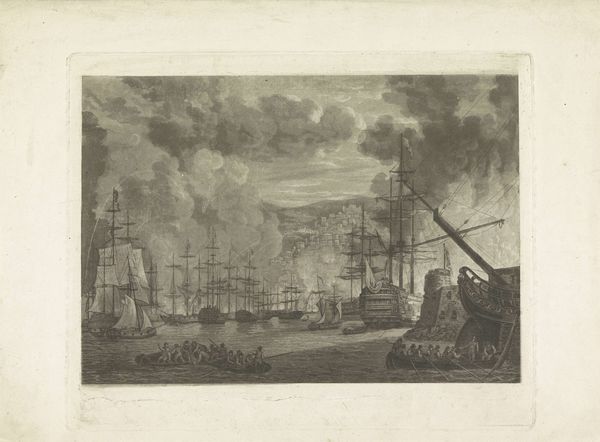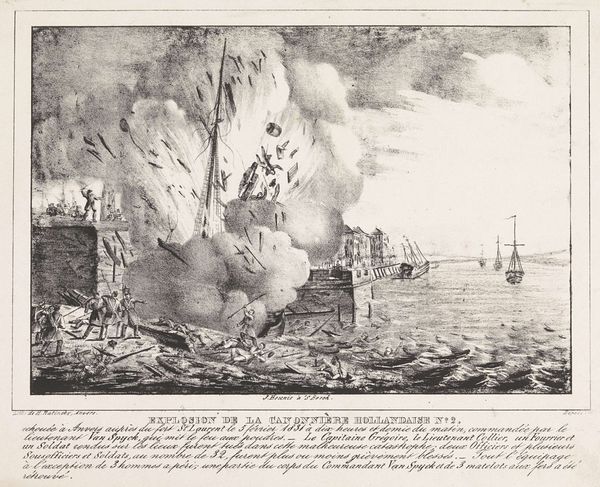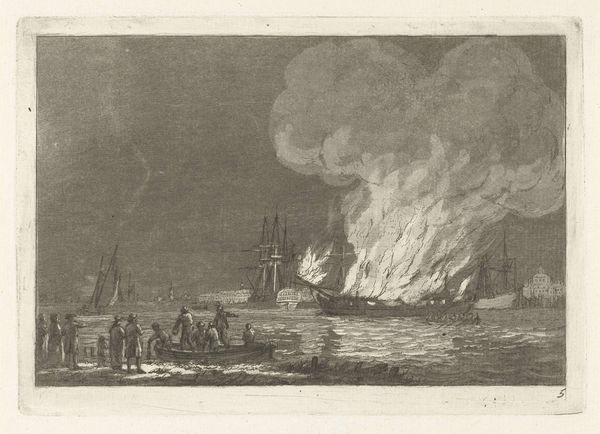
Dimensions: height 540 mm, width 780 mm
Copyright: Rijks Museum: Open Domain
Peltro William Tomkins created this print of the Battle of Copenhagen in 1801. It is a printmaking technique called aquatint, which renders the image in tonal gradations rather than lines. The effect is similar to a watercolor wash, perfectly suited to depict the smoke and turmoil of the naval battle. Aquatint involves applying acid to a metal plate in controlled areas to create the image. This is achieved by using powdered resin, which when heated affixes to the plate creating a porous, non-resistant ground. Acid then bites into the plate where there are gaps between the resin particles. The longer the plate is exposed to the acid, the deeper the tonal values and the darker the print will appear. The image here is of ships locked in combat, and men struggling in the water. The scene is dramatic, yet the method of its production is meticulous and considered. Ultimately, considering the method by which this image was made allows us to appreciate how even scenes of spontaneity are rooted in careful processes.
Comments
No comments
Be the first to comment and join the conversation on the ultimate creative platform.
